This is a Pentacon Six TL, a single lens reflex medium format camera made by VEB Pentacon starting in 1966. The Pentacon Six TL shoots 6cm x 6cm images on regular 120 roll film, and is an evolution of the earlier Praktisix made by VEB Kamera-und Kinowerke first produced in 1957. The Pentacon Six was a very successful medium format system camera that unlike many other 6×6 SLRs, used a focal plane shutter capable of speeds up to 1/1000, compared to many other leaf shutter SLRs which top out at 1/500. The Pentacon Six used its own lens mount which was shared with the earlier Praktisix and the very similar Soviet made Kiev 6C and 60. Although big and heavy, the Pentacon Six was well built and had a selection of some of the best Zeiss lenses covering focal lengths from 50mm to 1000mm.
Film Type: 120 Roll Film (twelve 6cm x 6cm exposures per roll)
Lens: 80mm f/2.8 Carl Zeiss Jena MC Biometar coated 5-elements in 4-groups + others
Lens Mount: Pentacon Six (P6) Breech Lock Bayonet
Focus: 1 meter to Infinity (80mm Biometar), 0.5 meter to Infinity (50mm Flektogon), 1.3 meter to Infinity (120mm Biometar)
Viewfinder: Interchangeable SLR Pentaprism
Shutter: Cloth Focal Plane
Speeds: B, 1 – 1/1000 seconds
Exposure Meter: None
Battery: None
Flash Mount: PC Port M and X Flash Sync, X-sync at 1/30
Weight: 1936 grams (50mm Flektogon and prism), 1318 (body and prism only), 942 grams (body only), 495 grams (120mm Biometar), 281 grams (80mm Biometar)
Manual: https://www.butkus.org/chinon/pentacon/pentacon_sixtl/pentacon_six_tl.pdf
How these ratings work |
The Pentacon Six family was one of the most successful lineups of medium format SLRs ever made, and using the long lived Praktisix lens mount, there were a huge number of lenses made for it. The camera is bulky and heavy, so care must be taken to support it for long shooting sessions, but its rugged build quality gives confidence that it can handle most anything you’d throw at it. With a selection of excellent lenses and a design not unlike that of a 35mm SLR, this is an excellent option for people who like the flexibility and through the lens composition of an SLR, but want the increase detail of 6×6 images. | ||||||
| Images | Handling | Features | Viewfinder | Feel & Beauty | History | Age | |
| 2 | 1 | 2 | 1 | 2 | 1 | 20% | |
| Bonus | +1 for the complete package, many of these were sold with many lenses and accessories | ||||||
| Final Score | 11.8 | ||||||
History
The 1950s is generally considered the decade in which SLR cameras took their place as the preferred style of camera for the professional photographer. Although a huge number of excellent German and Japanese models made their debut in that decade, the Single Lens Reflex camera goes back a lot farther than most people might think. According to Wikipedia, the earliest description of a camera with a reflex mirror goes back as early as 1676, with the first actual patent of a camera granted in 1861.
The earliest SLRs were complex in operation for the time, but still basic compared to what later in the 20th century would be considered an SLR. Usually, nothing more than a box camera with a hood, mirror, and some type of focusing screen, SLRs were big, heavy, expensive, and slow to use, but they did allow the convenience of ground glass focusing without having to swap film holders, and they did allow for through the lens focusing.
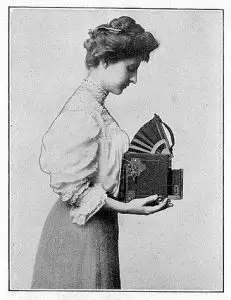
The Folmer & Schwing Auto Graflex from 1906 is an example of an early SLR. The image to the left shows the user peering through an opening in the bellows, looking at the image focused on a screen near the top of the camera. When composing an image, the reflex mirror is in the down position, blocking light from hitting the shutter. Before the photographer could capture an image, he or she would need to manually lift the mirror using a lever or string, so that light may pass through the lens to the shutter, and eventually the focal plane.
The medium format SLR, or more specifically, those which use roll film (the term ‘medium format did not become commonly used until much later), did not become developed until the early 1930s with models like the Eichapfel Noviflex. In my research for this, and many other articles where I’ve combed through magazines and photo catalogs from the early 20th century, the majority of cameras were still plate film view cameras, and smaller roll film folding and box cameras. It would appear that SLRs representing on a small part of the market. A complex operation, large size, and higher costs likely contributed to this.
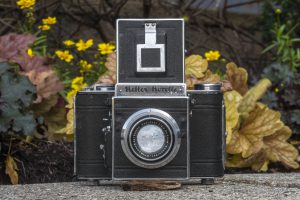
One of the earliest successful roll film SLRs was the Kochmann Reflex-Korelle, developed by Franz Kochmann in 1935. The Reflex-Korelle was essentially a roll film camera with a focal plane shutter and a large cube-shaped mirror box grafted on the front. The Reflex-Korelle was popular for the time as it was the introduction of reflex cameras to a large number of people. The camera was portable, had interchangeable lenses, and a bright (for the time) viewfinder, plus, with a roll of film you could shoot twelve 6cm x 6cm images without changing film.
The Reflex-Korelle continued production up until and after World War II, suggesting there was enough demand to keep it going. Its design influenced a large number of similar SLRs, including the original Asahiflex SLR which a common tale suggests that in 1950, Saburo Matsumoto used a pre-war Reflex-Korelle as inspiration for what would ultimately become the Pentax SLR.
Being produced in what would become Soviet controlled East Germany, the Reflex-Korelle outlasted the company that built it. Between 1945 and 1947, the company, now known as Korelle-Werke made various attempts at relaunching production of the prewar camera. Due to poor conditions of the factories and a lack of parts and skilled laborers, very few postwar examples of the camera were ever completed. It would not be until 1948 when the East German government nationalized the company into VEB WEFO (Werkstätte für Feinmechanik und Optik) to when production of the Reflex-Korelle was able to continue.
Postwar examples of the Reflex-Korelle were largely based off the prewar model with only minimal changes. Examples of the camera were exported to the United States and sold by Burke & James in Chicago, suggesting the model sold reasonably well. In 1950, an updated model called the Meister-Korelle was introduced that although looked very similar to the Reflex-Korelle, had a revised shutter with a top speed of 1/1000. It had a lever film advance, and a new selection of lenses.
The Meister-Korelle was intended to be the flagship model of VEB WEFO, but difficulties in building the camera and unreliable operation doomed both the camera and the company that made it. In 1951, only a year after the release of the Meister-Korelle, the camera was discontinued, and without any other models to build, VEB WEFO was absorbed into VEB Welta-Kamerawerke who did not continue producing the camera.
From there, the fate of the Reflex-Korelle is linked to VEB Kamera-Werkstätten Niedersedlitz which many articles online suggest had resumed production of the camera, but according to a 2009 book on the history of VEB Pentacon Dresden by Gerhard Jehmlich, the author disputes that any KW produced versions of the camera were ever made. Instead, Jehmlich says that KW merely considered building it, but instead in 1952 started working on their version of an all new 6×6 SLR.
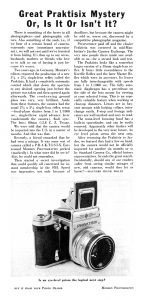
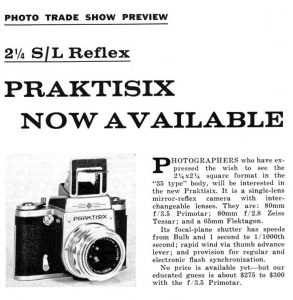
KW’s new camera was released in 1956 and would be called the Praktisix. Despite sharing a generally similar appearance to the Reflex-Korelle, the cameras were completely different. KW’s new camera was built to a much higher quality standard, which allowed for more reliable operation, plus offering new features like a bayonet lens mount and automatic aperture control, a first for a 6×6 SLR.
Upon its release, the Prakisix generated much excitement. Appearing in German advertisements, the camera was described as “Ein Meisterstück Deutscher Präzisionsarbeit” which means “a masterpiece of German precision manufacturing”.
The Praktisix came out at a time of fierce competition for roll film cameras that could shoot 6cm x 6cm images. A huge number of folding 6×6 cameras, 6×6 TLRs, and the 6×6 Hasselblad SLRs all vied for the buying power of photographers. The Praktsix had a left to right film transport, film advance lever, a focal plane shutter with a top 1/1000 shutter speed, and both interchangeable viewfinders and lenses, making it familiar to 35mm SLRs like the KW Praktina and Praktica, just bigger.
Although not available at launch, in 1958 a pentaprism viewfinder was released, the first for a 6×6 SLR, and a variety of other lenses including the 50mm wide angle Flektogon in 1960. Also around this time, KW was merged in with VEB Pentacon Dresden, which resulted in the KW logo no longer being used, in its place Pentacon’s familiar Ernemann Tower logo. The camera would continue to evolve, receiving incremental updates and a few model changes throughout the 1960s.
In 1964 and 1965 updated models called the Praktisix II and Praktisix IIA were released, improving the film transport, changing the design of things like the film advance lever and shutter speed dials, adding pull out feet on the bottom of the camera to help ease film loading, and eventually new electronic flash synchronization.
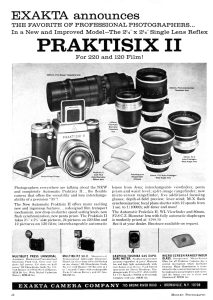
Although earlier Praktisix models were exported to the United States, the Praktisix II was much easier to find, with units being sold by a variety of photographic dealers. The ad to the right from the Exakta Camera Company in Bronxville, NY lists the price of the camera with waist level finder and 80mm Zeiss Biometar lens for $299.50. This price, when adjusted for inflation compares to right around $2500 today. A large price for sure, but certainly reasonable compared to other 6×6 cameras like the Hasselblad and Rolleiflex.
In 1966, nearly a decade after the release of the Praktisix, a significantly upgraded model would debut, but rather than continue on with the original name from the previous KW era, the camera was renamed the Pentacon Six, keeping in line with the company’s current name.
While maintaining backwards compatibility with lenses and viewfinders, the Pentacon Six had the following changes:
- Improved film transport via a toothed shaft which allowed for more accurate frame spacing
- Support for 220 (24 exposures) film
- Automatic resetting exposure counter
- Relocated film reminder dials
- Locking nut for flash sync cable
- Available Fresnel focusing screen that increased brightness by 2 stops
- Availability of new lenses, including an automatic 300mm Zeiss Sonnar
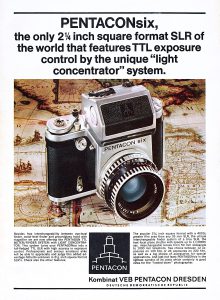
The Pentacon Six, as it was in 1966, turned out to be a very long lived model, staying in production with very few changes all the way to 1990 after the fall of the Berlin Wall. Starting in 1969, the Pentacon Six was renamed the Pentacon Six TL, with the TL signifying the availability of a TTL metered prism, but otherwise had no other changes.
Some US export versions of the Pentacon Six TL had two flash sync ports, one for X-sync and another for FP-sync, and some had black breech lock rings instead of chrome ones. US Export versions of the Pentacon Six also existed for a short time between 1968 and 1970, labeled as the Hanimex Praktica 66 to get around export restrictions from communist East Germany.
In 1971, the Arsenal factory in Kyriv, Soviet Union started production of the Kiev 6C, a camera that shared the Pentacon Six’s same lens mount, and a similar appearance, but was internally different and even had the shutter release on the camera’s left side. Although many Soviet camera factories were known to copy designs by other companies, the Kiev 6C should not be considered a direct copy as it is a completely unique model, only sharing the lens mount and similar shape.
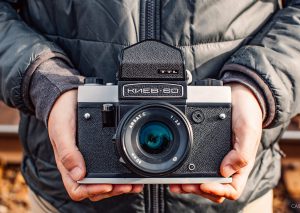
The Kiev 6C supported the same lenses and even had the same features, including an optional TTL metering prism. It was produced until 1986, replaced by the Kiev 60 released in 1984, which moved the shutter release over to the right, removed support for 220 film, removed the strap lugs, and had a couple other minor cosmetic changes.
The Kiev 60 would be discontinued in 1992, shortly after the Pentacon Six, but in 2002, a new company called Arax, also based in Kyiv, Ukraine, would start production of a new camera much like the Kiev 60, called the Arax 60. Featuring an almost identical body, but in black and featuring a new name plate, the Arax is said to have improved interior surfaces to reduce the change of flare from lighting bouncing around inside of the camera.
The Arax 60 is still in production today, continuing to be available new, with full support for all Pentacon Six, and Kiev 6C/60 lenses. As I write this, an Arax 60 body can be purchased new for $412 and with an Arax 80mm f/2.8 lens for $745 with several other upgrades available.
The Pentacon Six enjoyed a long life, which was the result of a combination of a form factor that didn’t have much competition, plus the East German camera industry wasn’t exactly known for rapid change in the decades to come.
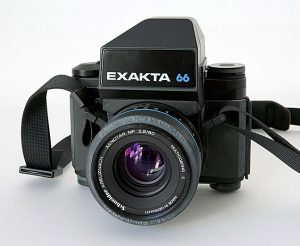
One exception to this was an updated model called the Exakta 66, which would make its debut in 1984 at Photokina. The Exakta 66 shares many of the same design cues as the Pentacon Six, including the same lens mount and overall body shape. The Exakta 66, not to be confused by two earlier cameras with the same name, would improve upon the original camera with a rubberized body coating and black painted body, a more compact viewfinder, electrical contacts on the lens mount to communicate aperture back to the metering system, and an LCD readout on the metered prism.
Although the Pentacon Six TL would end production in 1990, the Exakta 66 would continue to be offered up until the year 2000, which if you group it into a family of cameras including the Pentacon Six, Praktisix, Meister-Korelle, and the Reflex-Korelle, amounts to an astounding 65 years of cameras based off a similar basic design.
Today, the Pentacon Six is a go to camera for people recommending medium format SLRs, and for good reason. This camera was in production for a long time and many were made. Adding to the fact that the lens mount was shared by both the earlier Praktisix and the later Soviet cameras, there are a huge number of lens options out there.
My Thoughts
Medium format has an appeal to many people over 35mm and other miniature film types as the format’s larger negatives mean sharper, more detailed images that look better blown up or on a high resolution computer monitor.
Sadly, physics dictates that if you want to shoot bigger film, you need a bigger camera, and when it comes to medium format cameras, the size varies wildly from the “not much bigger than a Vito” Voigtländer Perkeo II to the “don’t drop it on your toes” Mamiya C330 Professional.
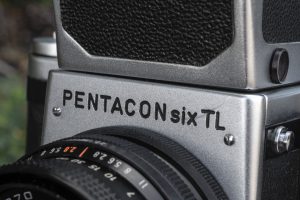
In the world of medium format SLRs, the same rules apply here, with the smallest examples being those based on some variation of the Kochmann Reflex-Korelle, which if you blur your eyes just enough, in dim lighting, and at just the right angle, is where we come to the Pentacon Six TL.
This particular camera and its three lenses was graciously loaned to me by a reader named Roger Beal who has entrusted me with a number of the other cameras which I have, or will be reviewing. After agreeing to borrow Roger’s camera, I quickly went online and started reading up on the camera to see what I was getting myself into. Other reviews of the Pentacon Six series always seemed to be favorable, with one comment that was consistent through them, all, that this was a heavy camera.
When it arrived and I pieced it together with the three lenses Roger sent, and the camera’s heft was quite evident. With just the body and prism, it weighed 1318 grams (2.9 lbs) which is heavier than any 35mm SLR I’ve tested, and heavier than most 120 TLRs. Mount a lens, and the weight escalates quickly, with the heaviest lens Roger included, the wide angle 50mm Flektogon, tipping the scales at a whopping 1936 grams (4.3 lbs)!
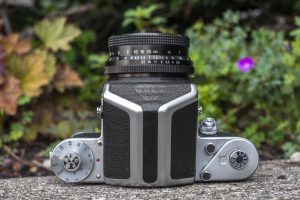
Looking at the top, the Pentacon Six doesn’t look that much different from a 35mm SLR, just much larger. Dominated by the huge 6cm x 6cm pentaprism, you see all the normal things you’d expect to see on top of an SLR, a shutter speed dial with film reminder dial on the left, a film advance lever with an integrated exposure counter on the right, and because this a roll film camera, a little round button for deactivating the film stop. The cable threaded shutter release on this camera is ergonomically located on the front of the camera, in easy reach of your right index finger. While I generally prefer front plate shutter releases on 35mm cameras, it is extra appreciated on the Pentacon Six as the large size of the camera would have made a top plate shutter release difficult to reach. A milled ring around the shutter release is a lock, which prevents accidental release of the shutter.
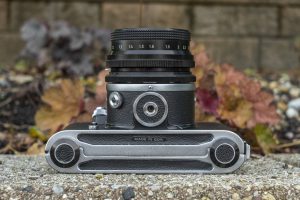
The bottom of the camera has two round feet on opposite ends which when loading film can be pulled downward to move the film spool shafts out of the way. A 1/4″ tripod socket is centrally located beneath the mirror box in an ideal location so that the camera’s weight is balanced on a tripod. To the left of the tripod socket is the PC flash sync connector, which has a milled lock ring for securing the flash sync cable when in use.
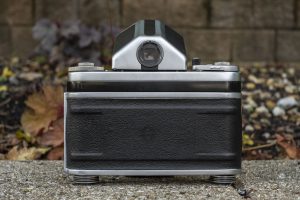
There’s not much to see on the back of the camera other than the eye piece for the pentaprism viewfinder and a large swath of body covering on the door. Had this example had the optional waist level finder attached, there would have been a metal release catch for opening the hood in the same location as the eyepiece.
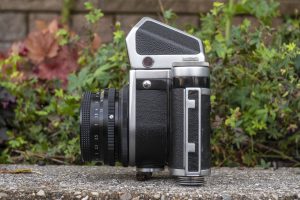
Opening the film door requires pulling down on the release catch on the camera’s left side. As with any film camera, you must take extra precaution not to open the film compartment with film still loaded in the camera.
On the each side of the mirror box are strap lug posts which are centrally located to help balance the camera when connected to a strap.
Also, notice a black round knob on the side of the pentaprism, just above the strap lug. A second one exists on the opposite side of the camera. These knobs are used to release the pentaprism from the body. Simply pull back on both knobs at the same time and the prism lifts off the body.
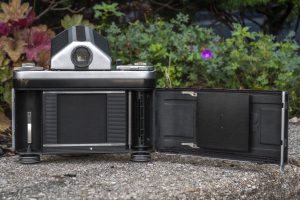
Opening the right hinged door reveals the film compartment. Film transport is from left to right onto removable spools. A toothed metal shaft exists to the right of the film gate, next to the take up side which is how the film counter operates. As with any 120 roll film camera, upon completion of a fresh roll of film, the supply spool gets moved over to the other side to become the take up spool, and as with any camera with a focal plane shutter, the cloth curtains are visible, so care must be taken not to touch them.
Inside of the film door is a large and dimpled film pressure plate and two metal springs that help keep pressure on the film as it passes over the metal shaft for the exposure counter.
The Pentacon Six TL uses fabric based light seals which did not need replacement on this example, but as with any half century camera, is something you should inspect before putting a roll of film through.
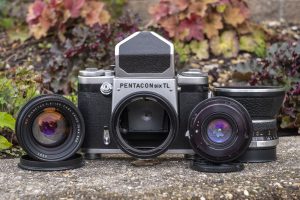
The Pentacon Six uses a breech lock bayonet lens mount, which if you’ve ever shot a manual focus Canon SLR with the FD lens mount, it works exactly the same way, in which you twist the large milled ring counterclockwise around the shutter and then pull the lens off. The advantage of breech lock bayonets is the lens doesn’t rotate while mounting or dismounting the lens, reducing any chances of grinding off metal from the mount.
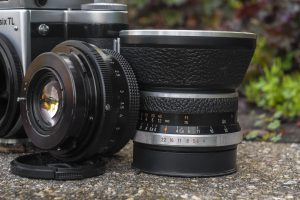
The Pentcon Six mount is shared with the earlier KW Praktisix, Exakta 66, Kiev 6C/60/88, and Arax SLRs which means a huge number of lenses are available for it.
Each of the Pentacon Six’s lenses has the aperture scale closest to the lens mount with strong click stops allowing you to easily detect each stop without looking at the lens. The width of the focus ring varies depending on which lens is mounted, but in the case of the three I had, all moved smoothly and without excessive resistance or grit.
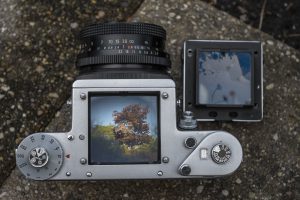
The Pentacon Six, like other interchangeable lens SLRs has a selection of options for the viewfinder. The one seen here is the standard pentaprism, but there are a couple of different metered prisms and waist level hoods. Removing the prism requires sliding back two round black knobs on the sides, near the front, while lifting up on the prism. With the prism removed, you can still see the ground glass for use at waist level, but without the aide of a shade, it can be hard to see the focusing screen in bright light. The Pentacon Six also had a variety of interchangeable focusing screens with a variety of focusing aides, or none at all.
On this example with the standard pentaprism and focusing screen with a split image focus aide and ground glass collar, the image was easy to see with the 80mm f/2.8 lens in good lighting. The viewfinder isn’t quite as bright as those found on later SLRs, especially in low light and with the wide angle and telephoto lenses. I spent a lot of time with the 50mm Flektogon mounted, and struggled on occasion to frame my images, even in bright light.
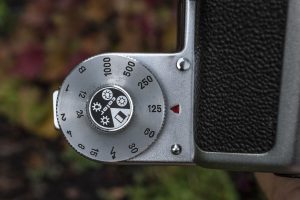
The Pentacon Six was produced for a long time and was quite popular for good reason. Although big and heavy, this was a complete camera system that was easy to use, and came with a great number of excellent lenses. Although other 6×6 TLR and SLR options were available, the Pentacon Six’s combination of a familiar 35mm form factor, a wide range of shutter speeds, a self timer, flash synchronization, automatic stop film advance, automatic resetting exposure counter, and lenses with automatic diaphragms make them compelling options that are easy to use for the beginner.
In an earlier interview with Dr. Gejza Dunay, who sells on eBay under the name ‘cupog’, he told me that the Pentacon Six family of cameras are one of his favorite to both repair and shoot. He claims their build quality to be very good, and with regular maintenance are capable of delivering excellent results today, and for decades to come.
When Roger asked if I wanted to try one out, I gleefully jumped at the opportunity as my expectations were already quite high for it. Of course high expectations don’t guarantee good operation, so did my results match what I had hoped I would get?
My Results
When it came time to shoot the Pentacon Six TL, I alternated between rolls of fresh Kodak Ektra 100 and expired Portra 800. I had shot the Portra previously and knew it needed two extra stops of exposure, so I shot it like a 200 speed film. I knew the shutter was accurate on the Pentacon, so I figured it wouldn’t be too difficult for Sunny 16.
Of the lenses that came with this camera, the one I was most interested in was the wide angle Flektogon. While I generally enjoy wide angle lenses on 35mm, I haven’t had a lot of opportunities to shoot wide angle in medium format. The majority of 6×6 cameras I’ve had the opportunity to shoot almost always have fixed lenses, and my only option to change that would be through correcting adapters that screw onto the filter threads. For medium format cameras with interchangeable lenses, wide angle options are usually out of my budget.
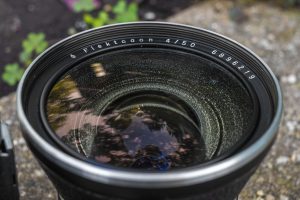
With the Flektogon mounted, I felt a freedom that I don’t normally have shooting 6×6 cameras with “standard” lenses. I could fit more into the image, and felt like my options for composition were greater. This did come at the expense of viewfinder brightness however, as I found that with the slightly slower Flektogon mounted, peering through the pentaprism viewfinder was a challenge in all but the brightest light. Although the pentaprism viewfinder was clear, its design had a negative impact on brightness that might not have been there with a waist level finder.
Flektogon Warning The front lens element of the 50mm Flektogon is very large and has a convex shape that comes very close to being even with the filter threads, which means you should take extra care not to damage the glass. An appropriate sized hood would be a good investment when using this lens to avoid damage.
I also shot with the 80mm Biometar, which has a focal length that is approximate to a 50mm lens on a 35mm camera, but I did not shoot the telephoto 120mm Biometar.
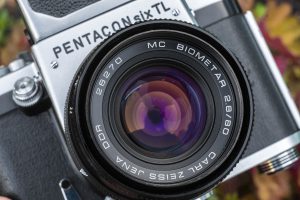
As you might imagine, the image quality from the Flektogon and the Biometars was excellent. Whether they were made in East or West Germany, Zeiss lenses consistently delivered the goods in center and edge sharpness, contrast, color rendition, and all of the other ways in which people describe image quality. Simply, these images are as good as any 6×6 images you’ll see, and having the benefit of true wide angle and telephoto lenses without the use of correcting adapters was a huge plus.
Compared to other 6×6 SLRs that are based off a modular design like the Hasselblad 500C and Bronica S2, the Pentacon Six has a control layout similar to that of a 35mm SLR, just bigger…a LOT bigger.
I did appreciate the familiarity of a rapid film advance lever, front mounted shutter release, and lens controls in all the locations I’d expect them, but the camera’s large dimensions were a problem for me. With the 50mm Flektogon mounted, holding the camera’s 1936 grams weight to your face was not unlike holding a small bowling ball. This is definitely a camera that you’d not want to leave home without some sort of neck strap or some other means to support it as dropping this camera not only would damage whatever it fell on, but would also likely suffer its own damage.
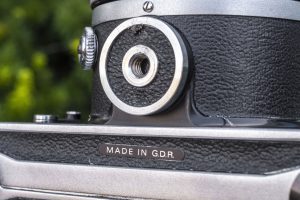
Of course I know that many people have used these cameras before and there will be at least some people reading this review yelling at their screen saying I’m a wimp, saying things like “that’s just how it is”, and they’re not wrong, but its something that I really think affects how you use the camera. In the right instances, the Pentacon Six could be the perfect camera, but for a casual walk about camera taking your family to the zoo, the weight will be a problem.
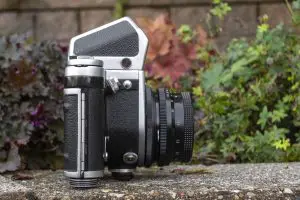
The Pentacon Six system is a well established and flexible medium format SLR that has earned its place as a desirable tool for making excellent photographs. There have been, and still are, many people who love this system and still use them today with regularity, so you shouldn’t need some camera blogger to validate its place both in the history of photography and in your camera bag.
That said, I didn’t enjoy my time with the Pentacon Six. Yes, it was easy to use, yes, it delivered quality images, and yes, I’d be lying if I said I didn’t want one in my permanent collection, I just don’t think it is a camera I would use very often. While no one camera is universally perfect for every person, in every shooting situation, for me, I tend to value portability.
If you have a desire to shoot a medium format 6×6 SLR and you have an opportunity to pick up a Pentacon Six with one or many of its excellent lenses, I absolutely think you should give it a try as it is a really cool camera. Just make sure that after spending whatever it would cost to buy it, that it is the right camera for you, because it wasn’t for me.
Related Posts You Might Enjoy
External Links
https://en.wikipedia.org/wiki/Pentacon_Six
http://camera-wiki.org/wiki/Pentacon_Six
https://casualphotophile.com/2019/09/17/pentacon-six-review/
https://www.35mmc.com/27/08/2020/pentacon-six-mini-review/
http://www.filmstillphotography.com/pentacon-six.html
https://monochromnights.com/blog/2016/08/my-impressions-of-the-pentacon-six-tl

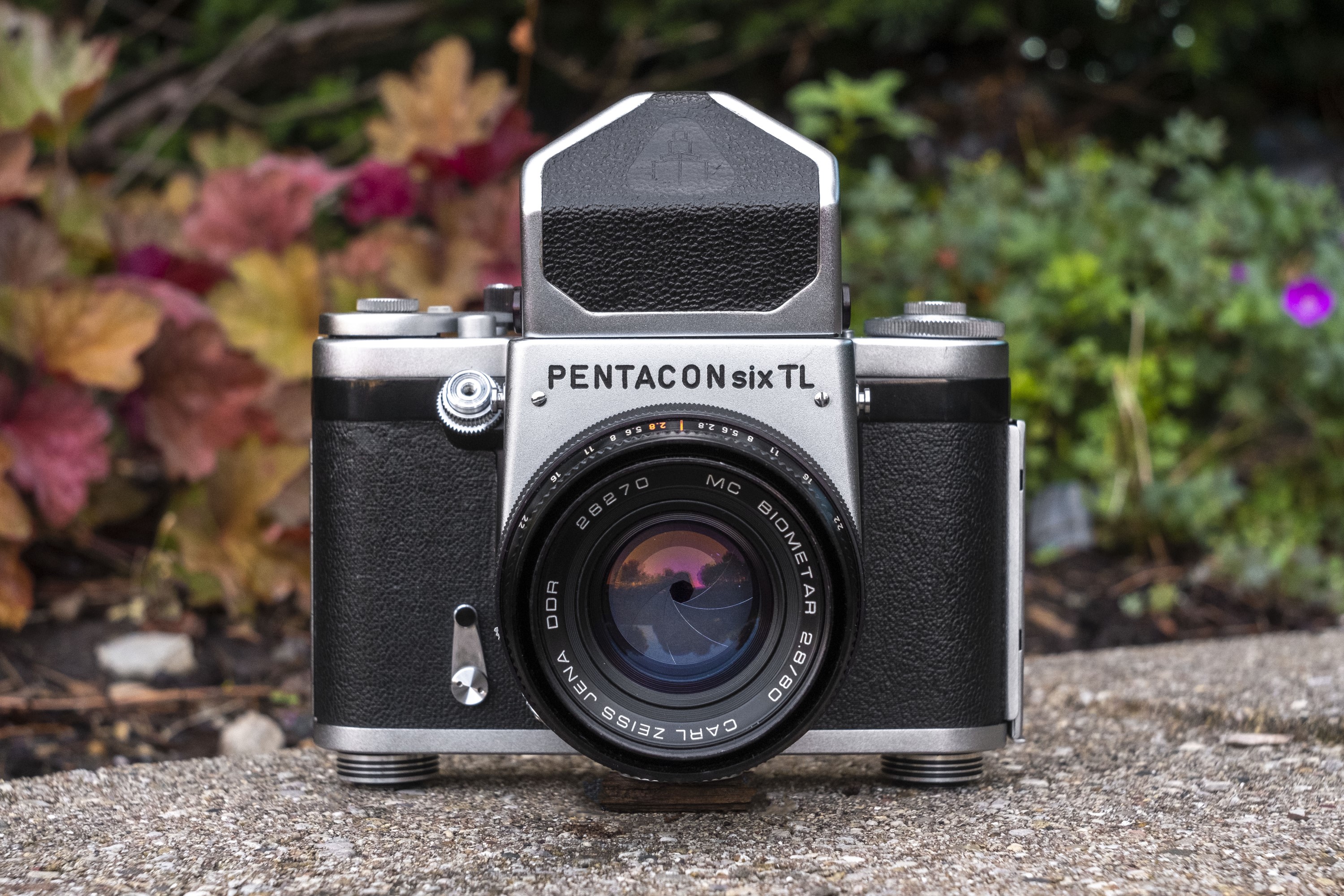

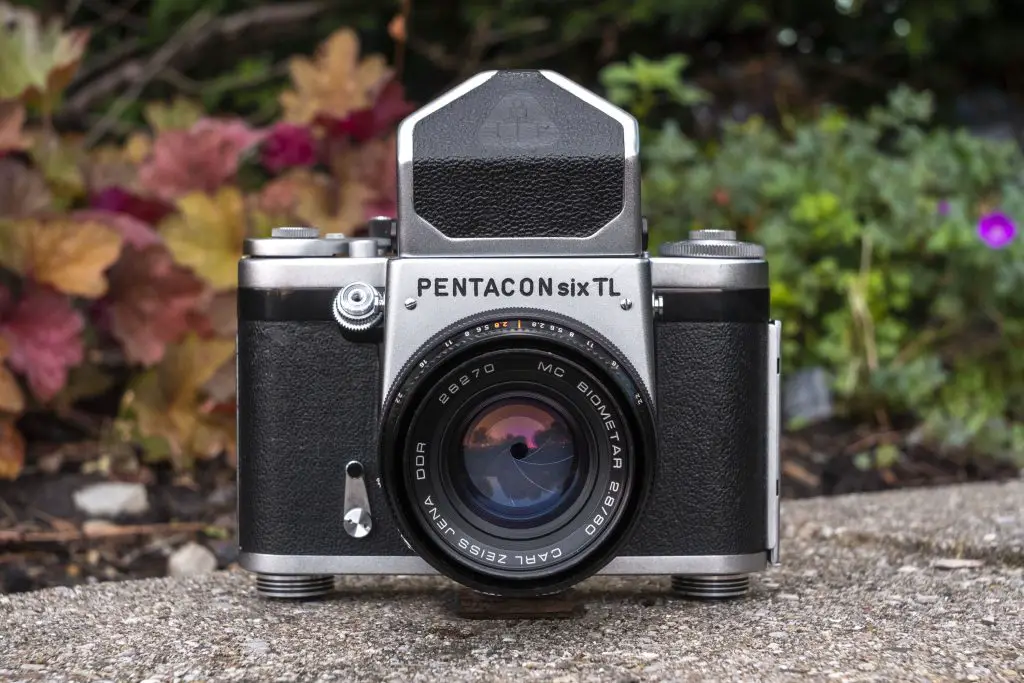
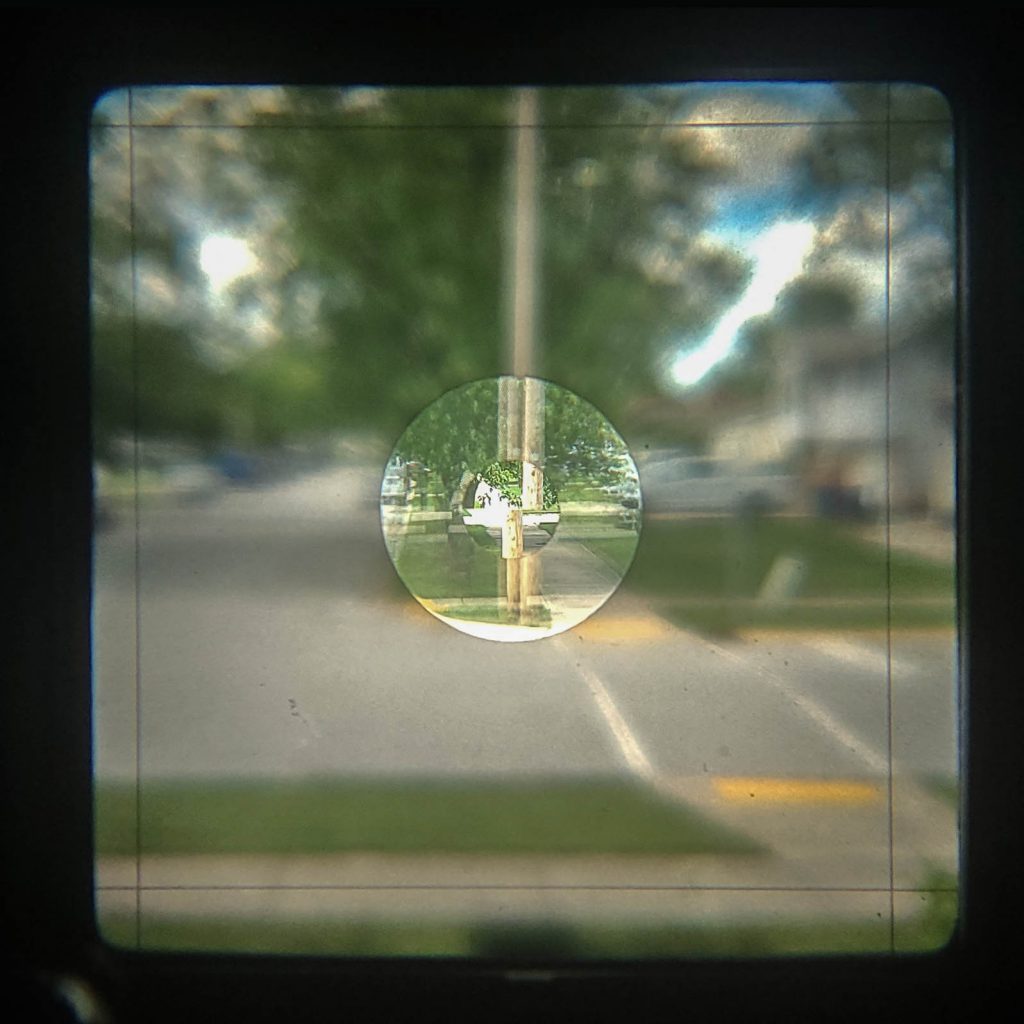
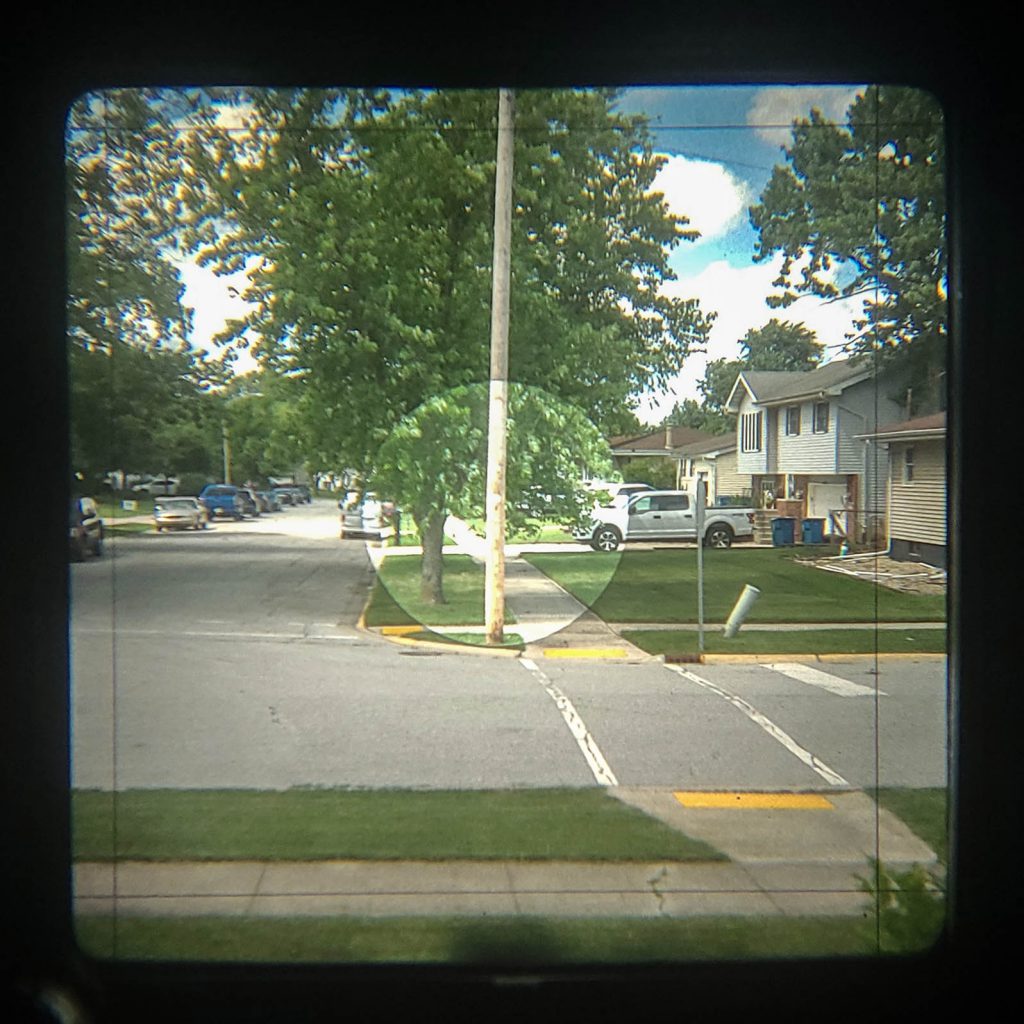


















Great post Mike! My Rittreck 6×6 which later became the Norita 66 owes a lot to the Pentacon 6 and although it comes with the amazingly fast 80mm f/2 lens which Dante Stella dubbed the “Medium Format Noctilux” I just wish they had of made it in Pentacon 6 mount so I could use those incredible Zeiss lenses. They did make an adapter, but sadly they are almost impossible to find.
Interesting history. I never fully understood how all these 6×6 SLRS with the same lens mouth fit in a historical context. However, I have never seen one of these Pentacons in use. The only big SLR type of medium format camera I have seen in regular use is the Pentax 67.